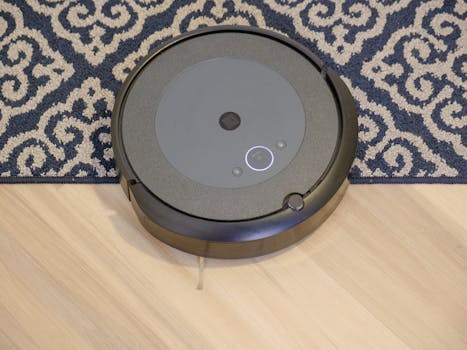
Smart Homes and Smart Living: The Technological Transformation of European Homes by 2025
Smart Homes and Smart Living are revolutionizing the way we live in European homes. With the latest technologies and innovations, homes are becoming more efficient, convenient, and sustainable. In this article, we will explore the current state of smart homes and smart living in Europe and what we can expect by 2025.
Introduction to Smart Homes and Smart Living
Smart homes and smart living refer to the integration of technology and automation in homes to make them more comfortable, convenient, and sustainable. This includes features such as voice-controlled assistants, smart thermostats, and home security systems. The concept of smart homes and smart living has been around for several years, but it has gained significant traction in recent years due to advancements in technology and the increasing demand for sustainable and energy-efficient living.
Current State of Smart Homes and Smart Living in Europe
Europe is at the forefront of the smart home and smart living revolution. According to a report by the European Commission, the smart home market in Europe is expected to grow from €12.3 billion in 2020 to €35.4 billion by 2025. This growth is driven by the increasing adoption of smart home devices, the development of new technologies, and the implementation of policies and regulations that support the adoption of smart homes and smart living.
Some of the key features of smart homes and smart living in Europe include:
- Voice-controlled assistants such as Amazon Alexa and Google Assistant
- Smart thermostats that can learn and adjust to a household’s temperature preferences
- Home security systems that can be controlled and monitored remotely
- Smart lighting systems that can be controlled and scheduled
- Energy management systems that can monitor and optimize energy consumption
Technological Transformation of European Homes by 2025
By 2025, European homes are expected to undergo significant technological transformations. Some of the key trends and innovations that will shape the future of smart homes and smart living include:
- The growth of the Internet of Things (IoT) and the increasing number of connected devices in homes
- The development of artificial intelligence (AI) and machine learning (ML) technologies that can learn and adapt to a household’s preferences and behaviors
- The increasing adoption of voice-controlled assistants and the development of new voice-controlled devices and applications
- The growth of smart home automation and the integration of different smart home devices and systems
- The development of new energy management systems and the increasing adoption of renewable energy sources
These technological transformations will have a significant impact on the way we live in European homes. They will make homes more efficient, convenient, and sustainable, and will provide households with more control and flexibility over their living spaces.
Benefits and Challenges of Smart Homes and Smart Living
Smart homes and smart living offer a range of benefits, including:
- Increased convenience and comfort
- Improved energy efficiency and sustainability
- Enhanced home security and safety
- Increased control and flexibility over living spaces
However, there are also challenges associated with smart homes and smart living, including:
- The high upfront costs of smart home devices and systems
- The complexity and difficulty of installing and integrating smart home devices and systems
- The potential risks and vulnerabilities associated with the increasing number of connected devices in homes
- The need for increased education and awareness about the benefits and risks of smart homes and smart living
Conclusion
In conclusion, smart homes and smart living are transforming the way we live in European homes. With the latest technologies and innovations, homes are becoming more efficient, convenient, and sustainable. By 2025, European homes are expected to undergo significant technological transformations, driven by the growth of the IoT, AI, and ML technologies, and the increasing adoption of voice-controlled assistants and smart home automation. While there are challenges associated with smart homes and smart living, the benefits are significant, and households that adopt these technologies will experience increased convenience, comfort, and control over their living spaces.






